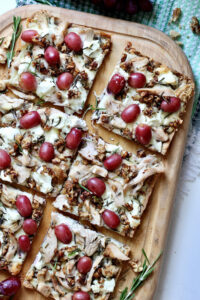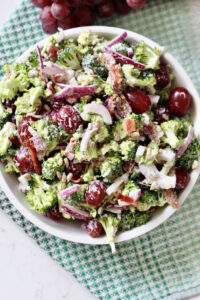I partnered with my longtime favorite pasta brand Banza on this sponsored post about diabetes and pasta! (All thoughts and ideas are my own.)
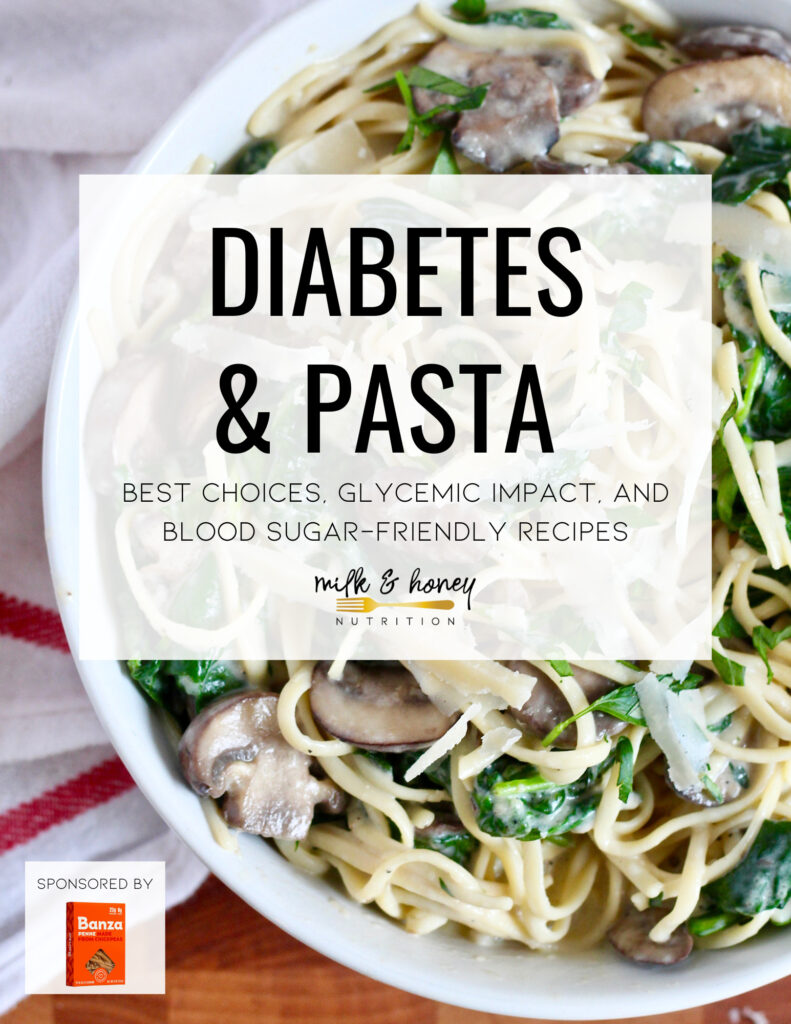
*This article is not intended to provide medical advice, diagnosis, opinion, treatment or services. The article and the links contained in it provide general information for educational purposes only. The information provided in this article is not a substitute for medical care. Do not use it in place of the advice of your physician or registered dietitian. *
In this article, we will discuss diabetes and pasta. We cover the glycemic impact of different types of pasta, tips for enjoying pasta, and my favorite brand!
Can people with diabetes eat pasta?
People with diabetes can absolutely enjoy pasta. In fact, there’s a number of different strategies and tips people can use to enjoy pasta and still manage their blood sugars well. We’ll cover several of them in this post.
Pasta is often listed at the very top of any list of foods that are supposedly off limits for people with diabetes. But, if you’ve read any of my other content, you know we don’t support this kind of thinking. 🙂 People with diabetes can and should enjoy all types of foods. Yes, some foods need more planning or “tips and tricks” than others, but that doesn’t mean they are off limits.
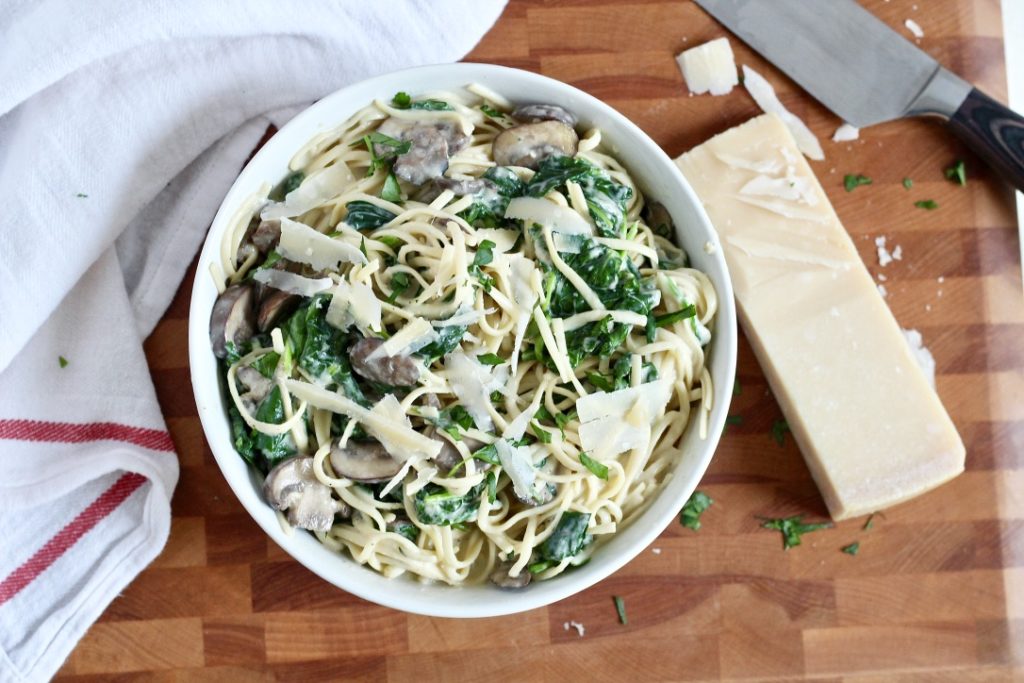
Is pasta good for diabetes?
There are many different kinds of pasta that can fit into a diabetes friendly eating pattern. But, some are easier than others to incorporate in a balanced way. Let’s look at the nutrition breakdown of some of the most common pasta options:
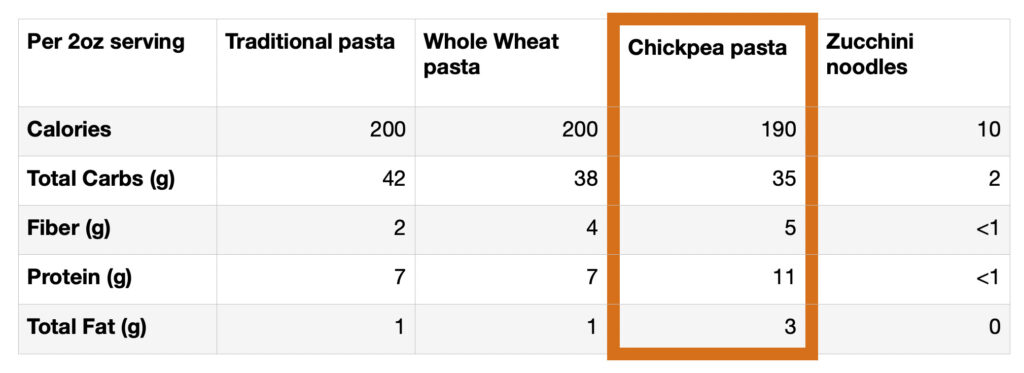
Traditional pasta: Great Value Enriched Penne; Whole wheat pasta: Great Value Whole Wheat Penne; Chickpea pasta: Banza Chickpea Pasta Penne; Zucchini noodles: Food Data Central, USDA.
Whole wheat pasta has about the same overall carbohydrate, protein, and fat as traditional pasta, but double the fiber. And, chickpea pasta has has even less carbohydrate, but more fiber and protein than both traditional pasta and whole wheat pasta. My favorite brand of chickpea pasta (for years!) has always been Banza!
Pasta GI level
The glycemic index (GI) tells us how quickly a food can raise blood glucose levels. (It does not take into account how much carbohydrate is in a food though.)
The glycemic index of traditional pasta is 51, so traditional pasta is considered a low glycemic index food. (Anything less than 55 is considered a low glycemic index food.)
The glycemic load, however, is a more accurate picture of how much and how quickly a food may raise blood sugar levels. The glycemic load considers both how quickly a food can raise blood sugar levels and how much carbohydrate is in the food.
This tells us how much of an impact a food can potentially have on blood sugar levels. The glycemic load of one serving of cooked traditional pasta is 24. (Anything 20 and higher is considered a high glycemic load food.) Thus, traditional pasta is considered a high glycemic load food.
But let’s look at how that compares to the other types of pasta we looked at above.
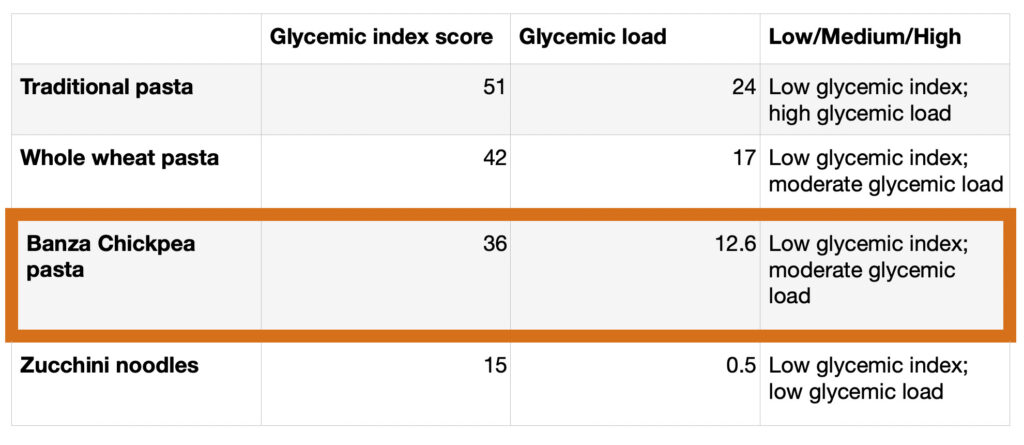
Sources: https://diabetesjournals.org/care/article/31/12/2281/24911/International-Tables-of-Glycemic-Index-and; Banza GI testing
Blood sugar impact of diabetes and pasta
With the exception of those zucchini noodles we referenced above, almost all types of pasta are going to raise blood sugar levels. (And, let’s be honest, zucchini noodles are not an adequate substitute for pasta. While zucchini is delicious and full of nutrients, it’s not the same eating experience and it doesn’t provide similar nutrition.)
But, let’s remember that some amount of rise in blood sugar is ok. That’s normal human physiology and metabolism for you. What we care about is how high that blood sugar rise goes, how quickly it happens, and how long it lasts.
Choosing moderate serving sizes of pastas that have a lower glycemic index value and glycemic load (like Banza chickpea pasta!) will result in less of a blood sugar rise and at a slower rate for most people… which is what we want! This does two things for your body:
- It allows the insulin that your body produces (or. that you inject) to keep up with and get ahead of sharp rises in blood sugar levels so your blood sugar stays stable after eating.
- It supplies a steady stream of energy so you feel full, satisfied, and energized for longer after eating.
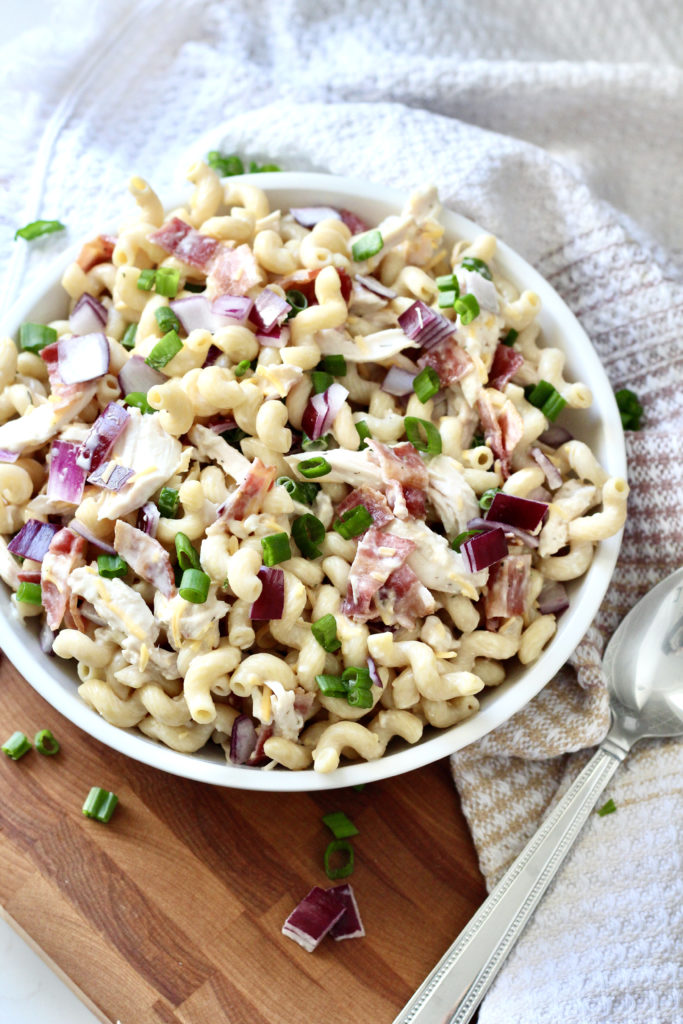
5 tips for diabetes and pasta
Whether you’re choosing traditional pasta or chickpea pasta, there are still some other tips and strategies we can use to promote stable blood sugars after eating pasta:
- Eat a salad or non-starchy vegetable before eating pasta. Research has shown that eating non-starchy vegetables before starches may promote more stable blood sugars after eating.
- Eat your protein sources before eating your pasta. Similar to our first tip, research has shown that eating protein before starches may promote more stable blood sugars after eating.
- Choose an “alternative” pasta made from vegetables or beans, like Banza.
- Cool your pasta down and refrigerate it overnight to increase the resistant starch in it.
- If you use insulin to manage your diabetes, give your insulin with an adequate pre-bolus time. (Discuss what the appropriate amount of time is for you with your diabetes care team.)
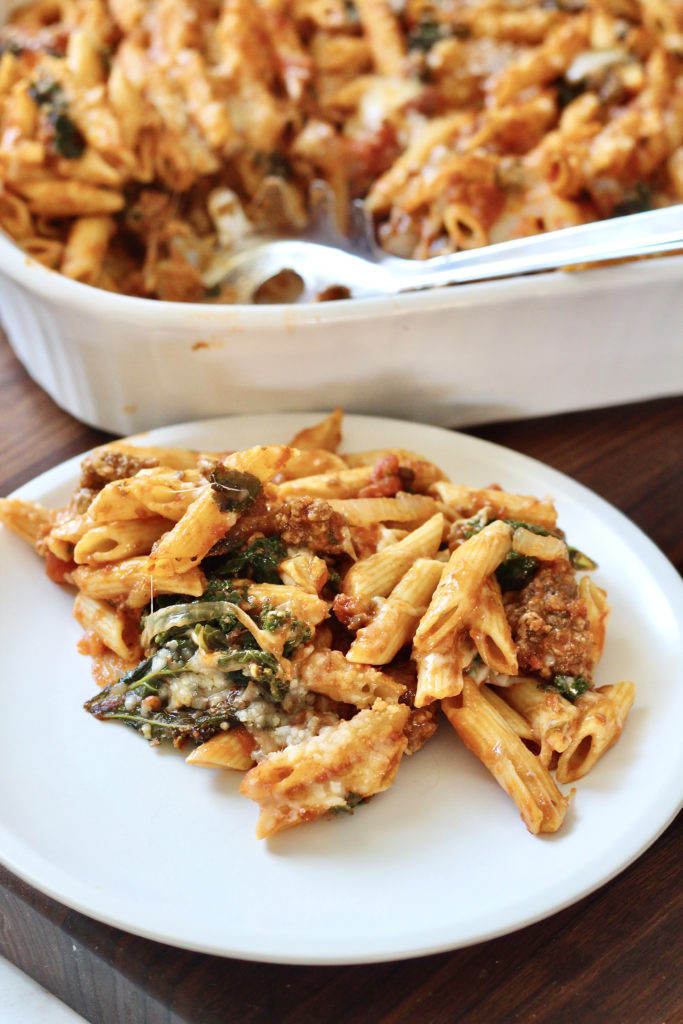
What is the best pasta for diabetes?
If you’re looking for a blood sugar friendly pasta, we ideally want to see all of the following compared to traditional pasta:
- Less carbohydrate
- More fiber
- More protein
Or, if you’re choosing to consume traditional pasta, make sure you’re adding fiber and protein sources to it
The best type of pasta for someone with diabetes is going to be a pasta that they enjoy the taste and texture of… and that their blood sugars respond well to. This may mean different things for different people.
You can read more about my top grocery store picks for pasta, including Banza, here.
But, you’ve probably figured out what my preference for diabetes and pasta is by now. I’m a big fan of chickpea pasta, and Banza has been my personal favorite brand for years. I love the flavor and texture of it, and the lower carbohydrate, but higher fiber and protein content.
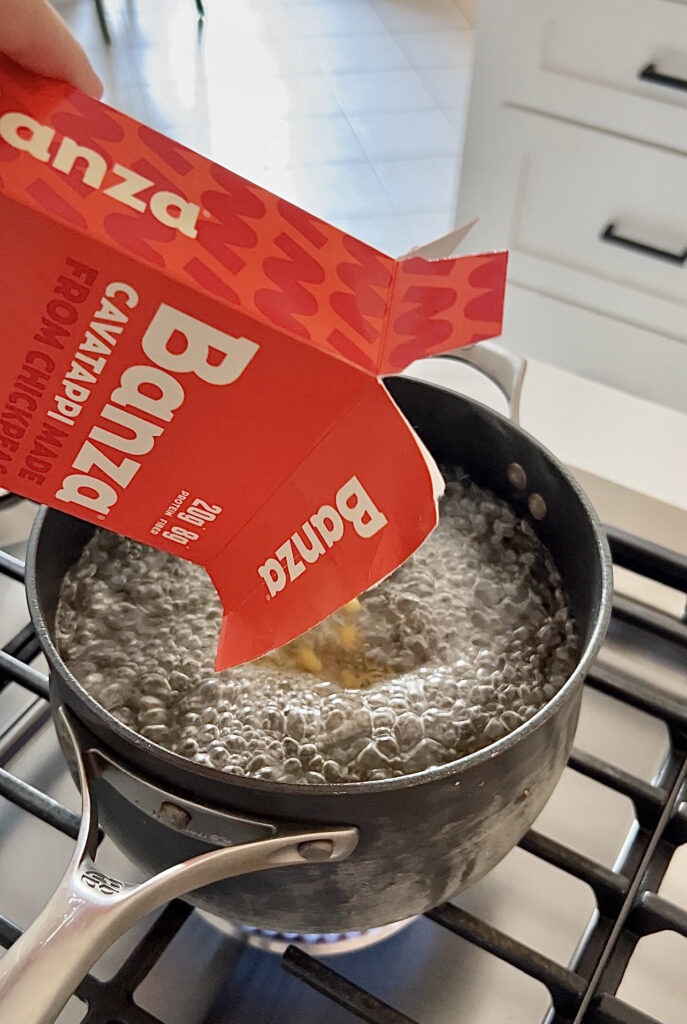
Chickpea pasta and diabetes
Chickpea pasta tends to work well for people with diabetes because it offers a more blood sugar friendly macro distribution than traditional pasta as we saw above.
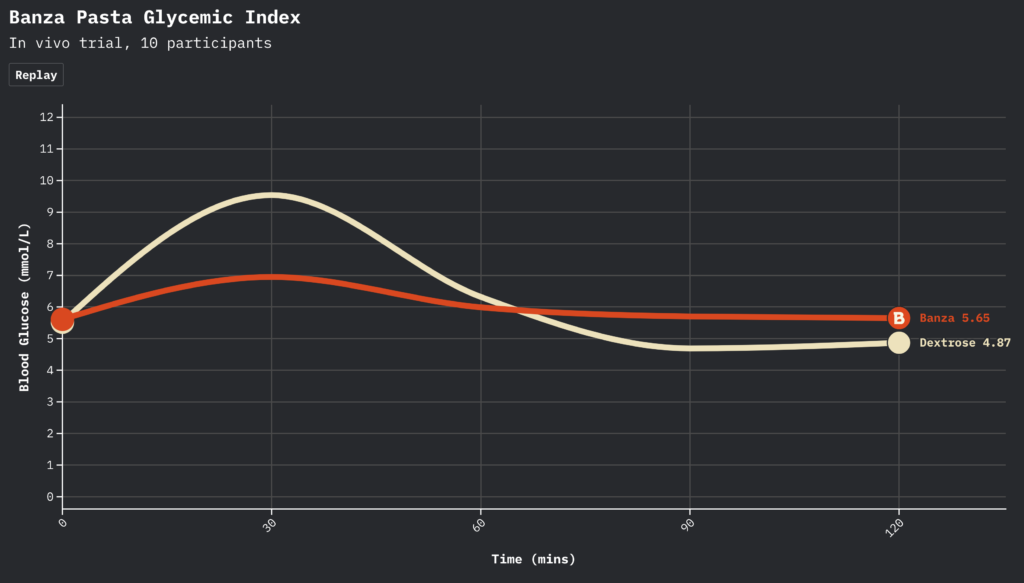
Banza chickpea pasta is made from chickpeas and peas which results in a pasta that has:
- 50% more protein
- 3x more fiber
- 25% fewer net carbs
… compared to traditional pasta.
It pairs well with any pasta recipe. (I’ve listed some of my favorite recipes below.) Just make sure to rinse it after cooking to prevent it from sticking together in one big clump.
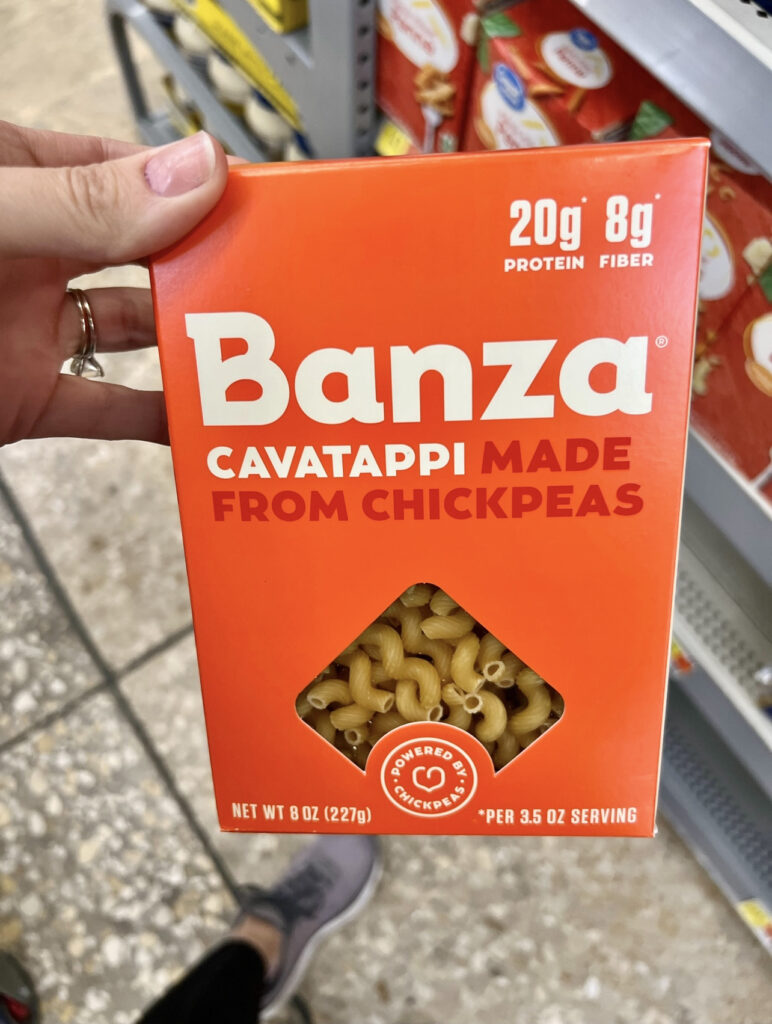
Chickpeas and blood sugar levels
The reason Banza pasta tends to be a better option for people with diabetes is because of the star ingredient: chickpeas!
Research has shown that consistent consumption of chickpeas is associated with:
- Lower blood insulin levels
- Less insulin resistance
- Lower blood lipid levels
- Increased satiety after eating
- Healthy postprandial blood glucose levels
In fact, research has shown that consuming chickpeas at one meal earlier in the day, may help you regulate your appetite and improve blood glucose values at your next meal later in the day!
Blood sugar friendly pasta recipes
I use Banza pasta for pretty much every pasta recipe you’ll find around here. These are a few of my favorites that use Banza chickpea pasta, and other fiber and protein rich ingredients.
Creamy Chickpea Pasta with Spinach and Rosemary
This creamy chickpea pasta with spinach and rosemary can be ready in under 30 minutes and is the perfect weeknight meal. You can add an additional protein source if you’d like, but the chickpea pasta is also a significant source of protein.
Pasta types that work well with this recipe include:
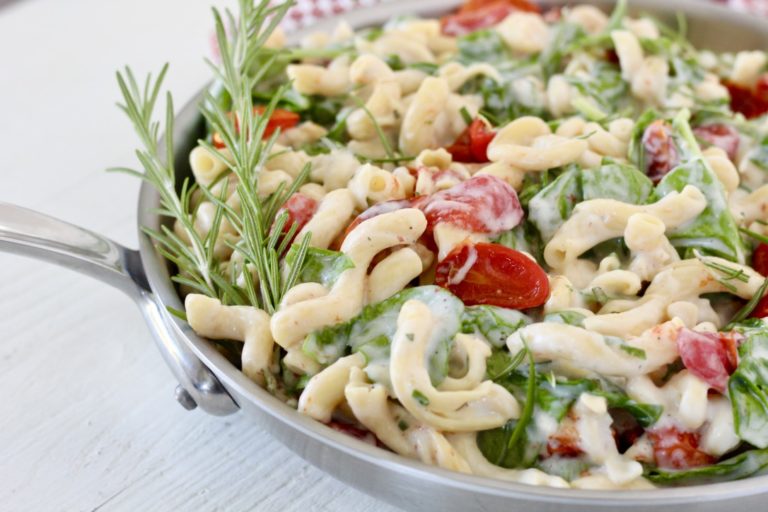
Chicken Bacon Ranch Pasta Salad
Pasta salad is such a versatile dish and I love that it can be served hot or cold, making it perfect any time of the year. It’s also the perfect recipe to add extra veggies into, and takes advantage of resistant starch that we discussed above.
Pasta types that work well with this recipe include:
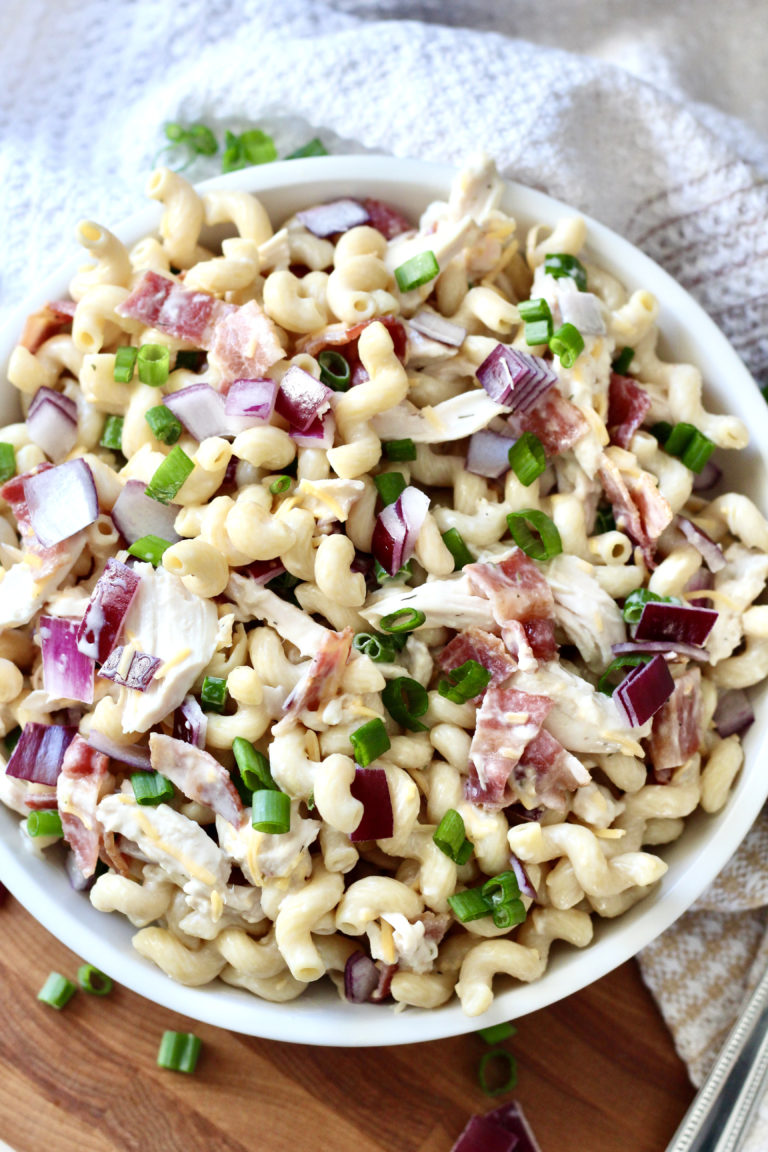
Cheesy Ground Lamb and Spinach Pasta Bake
This is the perfect cozy fall or winter meal. Again, we’re using a leaner meat with ground lamb, and all that extra fiber and protein from chickpea pasta.
Pasta types that work well with this recipe include:
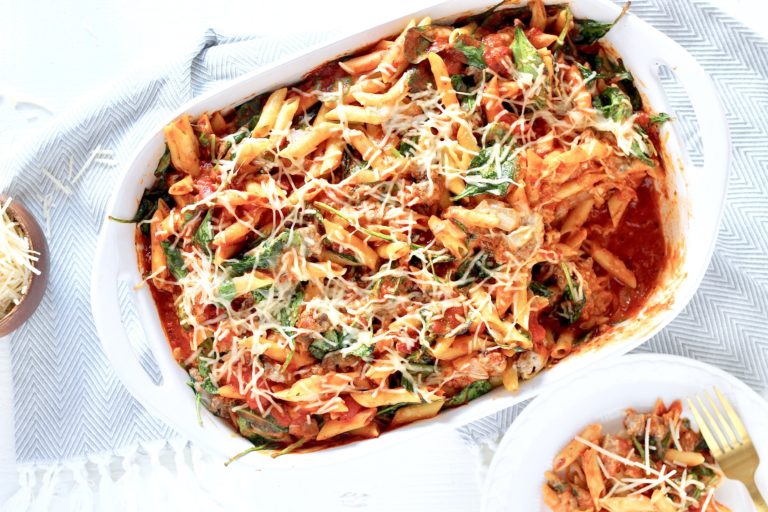
Artichoke Lemon Pesto Chickpea Pasta
Using chickpea pasta turns this traditionally higher carb recipe into a delicious blood sugar friendly meal. This is also one of the simplest and quickest pasta dishes you’ll find… ready in under 20 minutes.
Pasta types that work well with this recipe include:
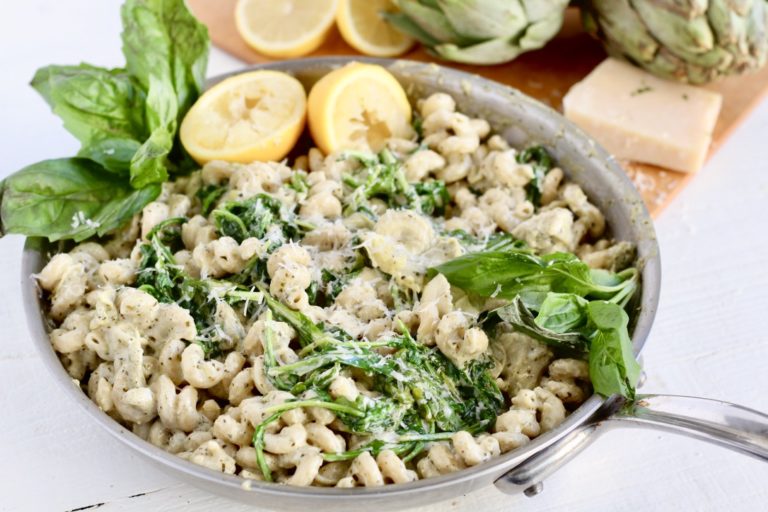
Spinach and Truffle Mushroom Pasta
All of the spinach in this truffle mushroom pasta combine with our chickpea pasta for an incredibly nutrient rich dish. Both add fiber, vitamins, minerals, and texture variants that put this dish over the top.
Pasta types that work well with this recipe include:
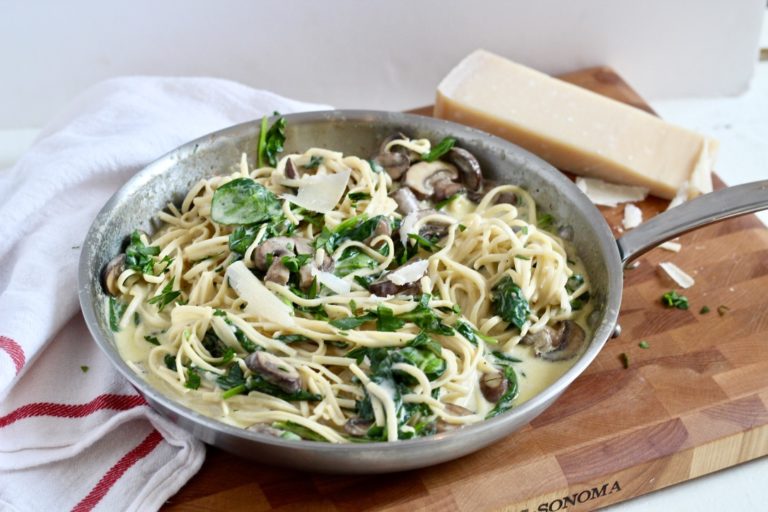
Bottom line on diabetes and pasta
So what is our final takeaway on diabetes and pasta?
- Yes, people with diabetes can still eat pasta.
- Pair your pasta with other sources of fiber and protein.
- Choose a pasta that you enjoy and that’s higher in fiber and protein, like Banza chickpea pasta!
Sources
- Low-glycemic index diets as an intervention for diabetes: a systematic review and meta-analysis.
- Chickpeas suppress postprandial blood glucose concentration, and appetite and reduce energy intake at the next meal.
- Biological Activities of Chickpea in Human Health (Cicer arietinum L.). A Review.
- Chickpeas may influence fatty acid and fiber intake in an ad libitum diet, leading to small improvements in serum lipid profile and glycemic control.
- Food Data Central, USDA: Zucchini Noodles.
- American Diabetes Association: Table of Glycemic Index and Glycemic Load values
- Glycemic Load and Glycemic Index
- Food Order Has a Significant Impact on Postprandial Glucose and Insulin Levels
- Method of Food Preparation Influences Blood Glucose Response to a High-Carbohydrate Meal: A Randomised Cross-over Trial


